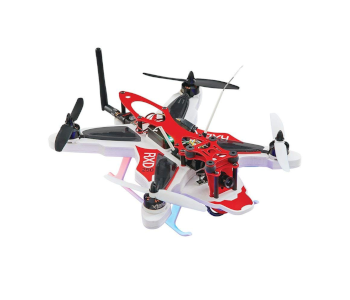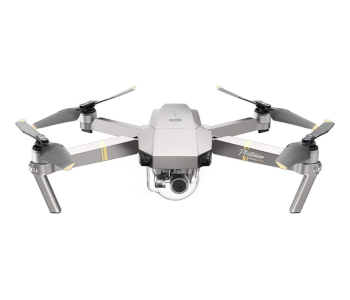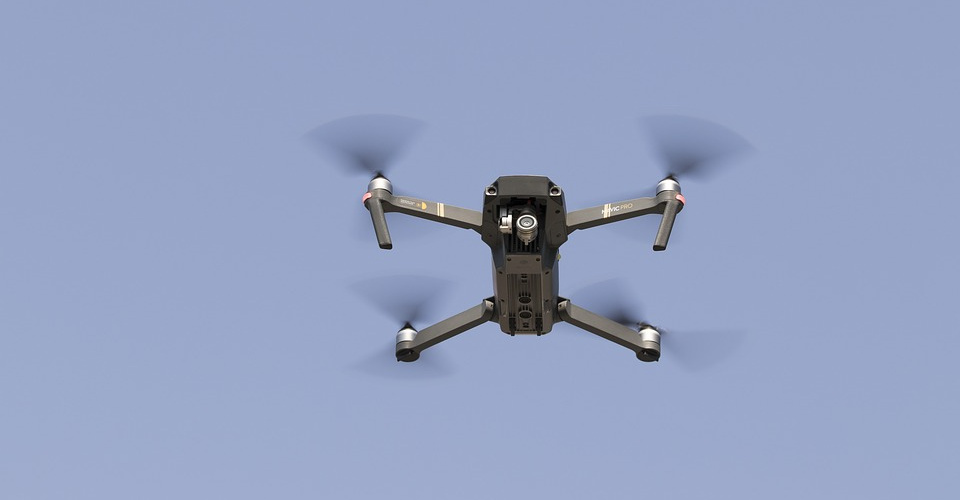What is a Drone ESC and How Does it Work?
Much like the drone’s propellers, motors, and the flight controller, another component plays a huge role in allowing drone pilots to maneuver these flying machines with ease: the Electronic Speed Controllers. More commonly known as the ESCs, these little circuit boards have been the center of attention of recent advances in drone technology. What is an ESC and why is it such an important component of drones? How exactly does it work?
A background on brushless motors

While some toy drones and mini-drones continue to use inexpensive brushed motors, a vast majority of consumer and prosumer-grade drones manufactured nowadays use brushless motors. Brushless motors have the benefits of being more efficient, less noisy, and longer lasting due to less wear and tear. Brushless motors can also be made smaller and lighter, a huge advantage for the new frontier of drones with ultra-portable designs.
In contrast to a brushed motor that relies on the contact of the rotor with a power supply to create a magnetic field that drives continuous rotation, a brushless motor relies on a series of coils along a central stator. Surrounding this stator is a rotor that is lined with a series of permanent magnets. The number of coils in a brushless motor may vary according to the design, but the operating principle is still the same.
Current is supplied to each coil one (or several) at a time, thus creating a magnetic field that drives the rotor to rotate. To maintain this rotation, the current supply switches over to the next coil in the series. The beauty of this process is that the rate at which the motor rotates can be directly influenced by the speed at which the current supply switches over from one coil to the next. Thus, by regulating signal switching, a drone motor and propeller can be made to rotate at exactly the speed needed to execute the commands issued by the pilot.
What does an ESC do?
From our analysis of drone propellers, we have determined that the variable rotation speeds of the propellers allow a drone to generate lift and to move in any direction. Obviously, this is determined by the commands that the drone receives from the remote controller held by the drone pilot. But what passes over these commands to the drone motor? This is where the ESC comes in.
An Electronic Speed Controller (ESC) is an electronic circuit that acts as the interface between the pilot’s commands and the individual drone motors. There are several types of ESCs in the market, but brushless motors require a 3-phase ESC. These are easily distinguished by the presence of three soldering pads that are meant to connect to the three motor phases of a brushless motor.
Despite their relative simplicity, brushed motors also need to be controlled by an ESC. Aside from having only two soldering pads for the two leads of a brushed motor, a two-phase ESC works by varying the voltage supply to the motor. Since the rotor of a brushed motor only relies on the contact that it makes with the two terminals from the ESC, it does not need a current switching function. Aside from an implementation that is a little simpler, an ESC for a brushed motor does not differ by much from the ESC for a brushless motor.
Important ESC parameters

If you’re in the market for as-built drones such as the usual ones sold by DJI or Parrot, then you probably won’t need to bother about the specs of an ESC. These drones come with built-in ESCs that have been specifically designed to work with the drone’s motors and batteries. However, if you’re into DIY-ing your drone, then here are a couple of specs you should be checking out for when you pick an ESC.
1. 8-bit vs. 32-bit
Most drones sold today are equipped with 32-bit ESCs, as these have quickly become the norm due to protocols that allow for faster response. 32-bit ESCs also provide the benefit of telemetry which allows them to transmit RPM data, rate of amplitude draw, and temperature. This data can then be displayed on a pilot’s HUD if the software permits.
However, 8-bit ESCs continue to abound, particularly in low-cost applications. Some users have argued that the difference in performance between 8-bit and 32-bit ESCs can hardly be noticed.
2. Individual vs. 4-in-1
ESCs can either be individually connected to each motor of the drone or be an integrated 4-in-1 unit that controls all four motors of a quadcopter. In the age of modern drones, individual ESCs have become far less common. Integrated ESCs have the advantage of having fewer components, meaning that there are fewer points of failure. They are also lighter, and the reduced amount of wiring needed means that the internal circuitry of the drone looks a little cleaner.
Big drone brands, such as DJI, now use System-on-a-Chip solutions that integrate the ESCs with the flight controller and a power management unit in a single chip. This has allowed DJI to design drones that are lighter and more compact. It has also made it easier to repair faulty drones, as it is much simpler to replace the whole module than to troubleshoot individual components.
3. Sine-waves vs. square-waves
A few years ago, DJI made big waves when they released the redesigned Mavic Pro Platinum. This happened just a few months after the release of the original Mavic Pro. According to DJI, the Mavic Pro Platinum boasted of longer flight time less noise by implementing changes in the ESC and propellers of the Mavic Pro.
What exactly improved in the ESC of the Mavic Pro Platinum? Instead of a switching algorithm that relied on step function, the new ESC switched between signals in a sequence that more resembled a sine-wave. The result of this change is a motor that is just a bit more efficient since the switch from one coil to another is smooth and no longer staggered. The reduction of the “stop-go” motion has also resulted in motors that are a bit quieter.
4. Amperage
The current rating of an ESC indicates how much current it can sustain. However, there is a little wiggle room to this rating, as most ESCs are capable of a ‘burst’ supply. For instance, an ESC rated for 25 A can handle a current of up to 35 A but only for about ten seconds.
When picking an ESC, you need to take into consideration the current draw requirement of your motor. This is also related to how big your drone’s propellers are, as bigger propellers will naturally require a higher current supply. Drone motors designed for higher RPM, such as those typically used by racing drones, can be very demanding in terms of current draw.
5. Voltage
The voltage rating of your ESC is solely a function of the type of battery you are using. Most ESCs are rated for 3-cell or 4-cell batteries, which covers most consumer drones available today. If you are into drone racing, then you’ve probably waddled into the territory of 5-cell or 6-cell batteries. The higher voltage output of these batteries will require more special ESCs. High voltage batteries, or batteries with more cells, can generate more power even at low current draw, making it possible for racing drones to fly much faster.
Dynamic braking
This isn’t a standard feature in most ESCs but is something that many drone manufacturers have strived for. Dynamic braking works by utilizing the motion created by leftover momentum to induce a back-voltage. In drones, this feature is activated as the drone slows down to a hover. By switching to Generator mode, the residual rotation of the rotor generates a current that charges the drone’s battery by a small amount.
This is one of the features that have allowed drones to have longer flight times without having to upgrade batteries. As drones become more and more valuable in various commercial applications, drone manufacturers have started to put a premium on how long their drones can fly on a single battery charge. Upgrading batteries isn’t always an option since it typically leads to increased weight or size. By coming up with various inventive solutions, such as dynamic braking and sine-wave drives, drone manufacturers can answer address a persistent problem with drones without compromising on other performance factors.
Final thoughts
The ESC is just one of the many parts of a drone that work together to make it the responsive, easy-to-use flying device that we have come to know. It basically acts as the relay between the drone’s flight controller and the motors, effectively translating pilot commands to actual movement.
Casual drone pilots probably won’t need to about what ESC to use, as it should already be a built-in component in most consumer-grade drones. For those who like to tinker around with DIY drones, fundamental knowledge on how ESCs work and their best features would be instrumental in fine-tuning how their drones perform. Choosing the right ESC can be very critical for drone applications that focus on quick response and for keeping your drone compact and lightweight.


Actually it is a specially designed multi propeller system inside a drone that makes this device highly independent and also assists in reduction of failures. One important thing to note about this multi propeller system is that even if any motor inside this device stops working; it will keep on flying as it gets support from propellers that are working in group. Drones that possess large number of motors inside are able to gain more control over their elevation and hence can carry more loads during flight. These propellers get their power from a dedicated source and most of these devices contain removable batteries so that it can stay in air for long run. The flight time can be extended with use of powerful batteries in design.